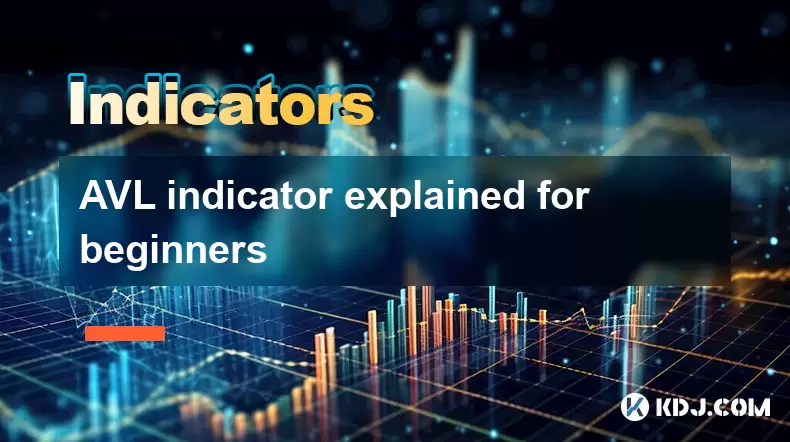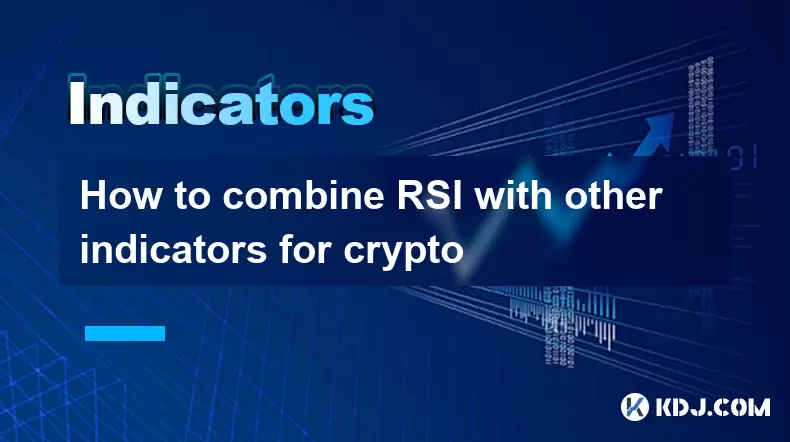-
 Bitcoin
Bitcoin $119,448.2396
0.27% -
 Ethereum
Ethereum $2,992.9919
0.78% -
 XRP
XRP $2.9074
1.58% -
 Tether USDt
Tether USDt $1.0001
0.00% -
 BNB
BNB $687.9097
-0.40% -
 Solana
Solana $161.5804
-0.47% -
 USDC
USDC $0.9998
0.01% -
 Dogecoin
Dogecoin $0.1948
-2.10% -
 TRON
TRON $0.3013
-0.08% -
 Cardano
Cardano $0.7286
-3.16% -
 Hyperliquid
Hyperliquid $47.3153
-3.81% -
 Stellar
Stellar $0.4543
-9.79% -
 Sui
Sui $3.8809
5.63% -
 Chainlink
Chainlink $15.6262
-0.55% -
 Hedera
Hedera $0.2368
-5.31% -
 Bitcoin Cash
Bitcoin Cash $501.2030
-0.80% -
 Avalanche
Avalanche $21.0650
-1.43% -
 UNUS SED LEO
UNUS SED LEO $9.0006
-0.39% -
 Shiba Inu
Shiba Inu $0.0...01310
-1.90% -
 Toncoin
Toncoin $3.0040
1.56% -
 Litecoin
Litecoin $93.8936
-1.20% -
 Monero
Monero $341.8918
1.27% -
 Polkadot
Polkadot $3.9087
-3.05% -
 Uniswap
Uniswap $8.9599
4.78% -
 Dai
Dai $0.9999
0.02% -
 Ethena USDe
Ethena USDe $1.0005
-0.02% -
 Bitget Token
Bitget Token $4.3954
-0.14% -
 Pepe
Pepe $0.0...01207
-2.26% -
 Aave
Aave $314.5223
1.72% -
 Bittensor
Bittensor $408.6988
2.76%
AVL indicator explained for beginners
The AVL indicator, or Awesome Volume Levels, helps traders spot trend reversals and confirm price moves by analyzing volume relative to past averages.
Jul 15, 2025 at 04:21 am

What is the AVL Indicator?
The AVL indicator, also known as the Awesome Volume Levels indicator, is a technical analysis tool used in cryptocurrency trading to help traders identify potential trend reversals and confirm price movements through volume analysis. Unlike traditional volume indicators that simply display volume bars, the AVL indicator provides a more nuanced interpretation by analyzing volume in relation to price action. It is particularly popular among day traders and swing traders who rely on volume as a confirmation signal for their trading strategies.
The AVL indicator typically appears as a histogram below the price chart and fluctuates above and below a zero line. When the histogram bars are green, it indicates that the current volume is higher than the previous period's volume, suggesting increasing buying pressure. Conversely, red bars indicate that volume is decreasing compared to the prior period, signaling weakening momentum or selling pressure.
How Does the AVL Indicator Work?
The AVL indicator calculates the difference between the current volume and the average volume of a previous period, usually the last 34 periods. This calculation helps traders visualize how volume is changing over time and whether it is increasing or decreasing in a meaningful way.
- The AVL value for each period is calculated as:
AVL = Current Volume - Average Volume (of the last 34 periods) - When the AVL value is positive, it means that volume is stronger than the average, and the histogram bar appears green.
- When the AVL value is negative, it suggests that volume is weaker than the average, and the histogram bar appears red.
This dynamic visualization helps traders spot volume divergences, which can be early signs of trend reversals. For instance, if the price is rising but the AVL histogram is showing lower highs, it could signal that the uptrend is losing momentum.
Using AVL Indicator to Confirm Price Trends
One of the primary uses of the AVL indicator is to confirm price trends. In a healthy uptrend, volume should generally increase as prices rise. Similarly, in a downtrend, volume should increase as prices fall. If the AVL histogram aligns with the direction of the price, it strengthens the validity of the trend.
- In an uptrend, consistent green AVL bars indicate that buyers are actively pushing the price higher.
- In a downtrend, red AVL bars growing in size suggest that sellers are dominating the market.
However, when the AVL histogram starts to diverge from the price movement, it can signal a potential reversal. For example, if the price makes a new high but the AVL histogram makes a lower high, it could indicate that the rally is losing strength.
Spotting Divergences with the AVL Indicator
Divergences are one of the most powerful signals that the AVL indicator can provide. A divergence occurs when the price and the AVL histogram move in opposite directions, suggesting a potential change in market sentiment.
Here’s how to identify divergences using the AVL indicator:
- Look for a situation where the price is making higher highs, but the AVL histogram is making lower highs — this is a bearish divergence and may indicate an upcoming downtrend.
- Conversely, if the price is making lower lows, but the AVL histogram is making higher lows, this is a bullish divergence and could signal an upcoming uptrend.
Traders often combine this divergence analysis with other technical tools such as moving averages or RSI to increase the reliability of the signals.
Setting Up the AVL Indicator on Trading Platforms
Most modern trading platforms like TradingView, MetaTrader 4/5, and Binance's native tools allow users to add custom indicators. Here’s how to add the AVL indicator on TradingView:
- Open your preferred chart on TradingView.
- Click on the "Indicators" button located at the top of the chart.
- Use the search bar to look for "Awesome Volume Levels" or "AVL".
- Select the indicator and click "Add to Chart".
- Adjust the settings if necessary (default is usually 34 periods).
- Observe the histogram below the price chart and start analyzing volume patterns.
Some platforms may require you to manually upload the indicator script if it's not available in the default library. Make sure to download the script from a trusted source and follow the platform-specific instructions for installation.
Common Mistakes Beginners Make with AVL Indicator
Beginners often fall into the trap of over-relying on the AVL indicator without considering the broader market context. Some common mistakes include:
- Ignoring price action: The AVL should be used in conjunction with price patterns and candlestick formations, not in isolation.
- Failing to adjust settings: The default 34-period setting may not suit all timeframes or trading styles. Experiment with different settings based on your strategy.
- Misinterpreting short-term fluctuations: Not every red or green bar indicates a trade opportunity. Focus on trends and divergences rather than individual bars.
- Neglecting other indicators: Volume is just one piece of the puzzle. Combine AVL with tools like moving averages, RSI, or MACD for better accuracy.
Avoiding these pitfalls can significantly improve the effectiveness of the AVL indicator in your trading decisions.
Frequently Asked Questions (FAQs)
Q: Can the AVL indicator be used for all cryptocurrencies?
Yes, the AVL indicator works with all cryptocurrencies as it is based purely on volume and price data, which are universal across all assets.
Q: Is the AVL indicator suitable for scalping strategies?
While the AVL can be applied on short timeframes, it's generally more effective for day trading or swing trading due to its reliance on volume trends that take time to develop.
Q: How does AVL differ from the standard volume indicator?
The standard volume indicator only shows the total volume per period, while the AVL provides a comparative view by showing how current volume relates to the average volume over a set period.
Q: Can I use the AVL indicator on non-crypto assets?
Absolutely. The AVL indicator is applicable to any financial market that includes volume data, including stocks, forex, and commodities.
Disclaimer:info@kdj.com
The information provided is not trading advice. kdj.com does not assume any responsibility for any investments made based on the information provided in this article. Cryptocurrencies are highly volatile and it is highly recommended that you invest with caution after thorough research!
If you believe that the content used on this website infringes your copyright, please contact us immediately (info@kdj.com) and we will delete it promptly.
- BDAG X1 App Skyrockets, SHIB Rebounds, and XMR Holds Strong: What's Happening?
- 2025-07-15 07:10:12
- Ruvi AI: The Audited Token Set to Outshine Ethereum with Massive Gains?
- 2025-07-15 06:50:12
- DeFi Token with 10X Potential: Mutuum Finance and the Year-End Opportunity
- 2025-07-15 06:50:12
- Bitcoin's Wild Ride: $120K Surge, Crypto Bill Buzz, and What It All Means
- 2025-07-15 07:10:12
- XRP's Cup and Handle: Millionaire Target in Sight?
- 2025-07-15 07:50:12
- Bitcoin Blasts Past $186,000: A New Milestone or Just the Beginning?
- 2025-07-15 08:10:12
Related knowledge

Advanced RSI strategies for crypto
Jul 13,2025 at 11:01am
Understanding the Basics of RSI in Cryptocurrency TradingThe Relative Strength Index (RSI) is a momentum oscillator used to measure the speed and chan...

Crypto RSI for day trading
Jul 12,2025 at 11:14am
Understanding RSI in the Context of Cryptocurrency TradingThe Relative Strength Index (RSI) is a momentum oscillator used to measure the speed and cha...

Crypto RSI for scalping
Jul 12,2025 at 11:00pm
Understanding RSI in the Context of Crypto TradingThe Relative Strength Index (RSI) is a momentum oscillator widely used by traders to measure the spe...

What does an RSI of 70 mean in crypto
Jul 13,2025 at 06:07pm
Understanding the RSI Indicator in Cryptocurrency TradingThe Relative Strength Index (RSI) is a widely used technical analysis tool that helps traders...

How to avoid RSI false signals in crypto
Jul 13,2025 at 06:21pm
Understanding RSI and Its Role in Crypto TradingThe Relative Strength Index (RSI) is a momentum oscillator used to measure the speed and change of pri...

How to combine RSI with other indicators for crypto
Jul 12,2025 at 08:35am
Understanding the Role of RSI in Crypto TradingThe Relative Strength Index (RSI) is a momentum oscillator that measures the speed and change of price ...

Advanced RSI strategies for crypto
Jul 13,2025 at 11:01am
Understanding the Basics of RSI in Cryptocurrency TradingThe Relative Strength Index (RSI) is a momentum oscillator used to measure the speed and chan...

Crypto RSI for day trading
Jul 12,2025 at 11:14am
Understanding RSI in the Context of Cryptocurrency TradingThe Relative Strength Index (RSI) is a momentum oscillator used to measure the speed and cha...

Crypto RSI for scalping
Jul 12,2025 at 11:00pm
Understanding RSI in the Context of Crypto TradingThe Relative Strength Index (RSI) is a momentum oscillator widely used by traders to measure the spe...

What does an RSI of 70 mean in crypto
Jul 13,2025 at 06:07pm
Understanding the RSI Indicator in Cryptocurrency TradingThe Relative Strength Index (RSI) is a widely used technical analysis tool that helps traders...

How to avoid RSI false signals in crypto
Jul 13,2025 at 06:21pm
Understanding RSI and Its Role in Crypto TradingThe Relative Strength Index (RSI) is a momentum oscillator used to measure the speed and change of pri...

How to combine RSI with other indicators for crypto
Jul 12,2025 at 08:35am
Understanding the Role of RSI in Crypto TradingThe Relative Strength Index (RSI) is a momentum oscillator that measures the speed and change of price ...
See all articles

























































































